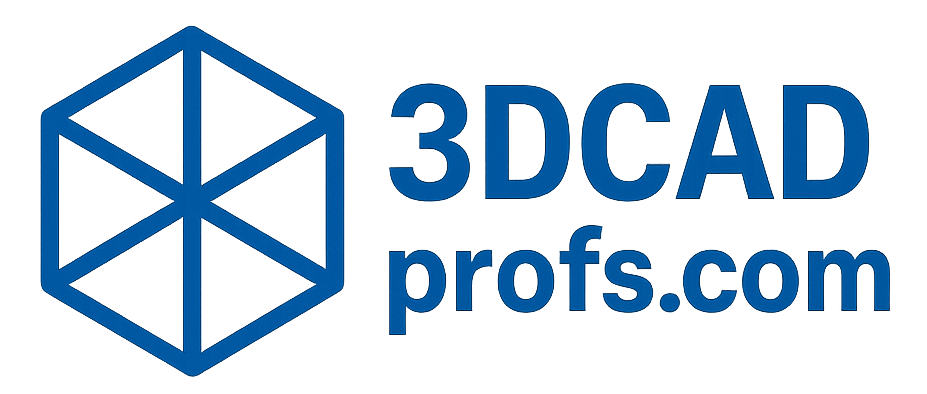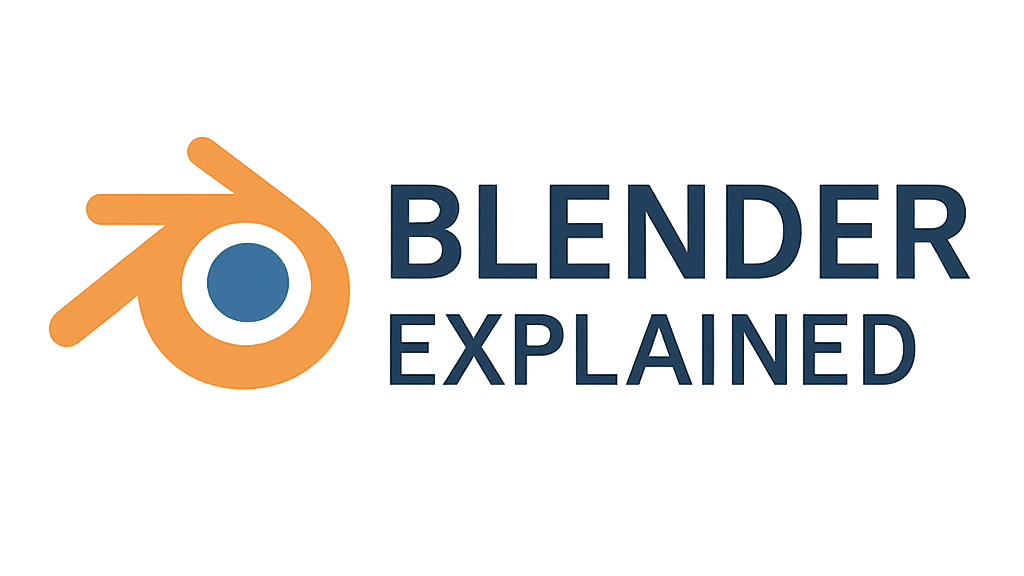Blender Explained
The Free and Open Source 3D Creation Suite
Introduction to Blender
Blender is a powerful and free, open-source 3D computer graphics software toolset used for creating animated films, visual effects, art, 3D-printed models, motion graphics, interactive 3D applications, virtual reality, and computer games. Supported by the Blender Foundation, its mission is to provide the best 3D technology in the hands of artists everywhere, for free. Its comprehensive feature set makes it a viable alternative to many expensive commercial software packages.
Core Principle: A Unified 3D Pipeline
Blender’s philosophy is to provide a complete, end-to-end 3D creation pipeline in a single application:
- Conceptualization & Modeling: Users start by creating 3D shapes using various techniques like polygonal modeling, sculpting, or procedural generation.
- Texturing & Shading: Materials and textures are applied to the surfaces of models to give them color, texture, and other physical properties.
- Rigging & Animation: A digital skeleton (rig) is created for characters or objects, which can then be animated over time using keyframes.
- Simulation: Physics-based simulations for smoke, fire, fluids, cloth, and rigid bodies add realism.
- Rendering: The 3D scene is processed into a final 2D image or video sequence using powerful rendering engines like Cycles (photorealistic) or Eevee (real-time).
- Compositing & Post-Production: The final rendered images can be enhanced, color-graded, and combined with other elements directly within Blender’s compositor and video editor.
An end-to-end workflow in one tool.
Key Features & Capabilities
Modeling & Sculpting
A comprehensive toolset for polygonal modeling, NURBS surfacing, and digital sculpting with dynamic topology.
Grease Pencil
A unique tool that allows users to draw and animate in a 3D space, merging 2D and 3D workflows for storyboarding and hand-drawn animation.
Animation & Rigging
Features character animation tools, non-linear animation, constraints, and vertex weighting for creating complex rigs.
Rendering (Cycles & Eevee)
Includes Cycles, a powerful path-tracing engine for photorealism, and Eevee, a real-time physically based renderer for fast previews and stylized results.
Visual Effects (VFX)
Built-in tools for motion tracking, camera tracking, masking, and compositing to integrate 3D elements into live-action footage.
Simulation
Physics solvers for fluids (smoke, fire, liquid), cloth, rigid bodies, particles, and hair dynamics.
Customization & Scripting
Extensive customization options and a powerful Python API allow for creating custom tools, add-ons, and automating tasks, making Blender highly adaptable.
The Power of Open Source
Blender’s open-source nature is one of its greatest strengths:
Free to Use
Blender is free for any purpose, including commercial projects, lowering the barrier to entry for individuals and studios.
Community Driven
Development is supported by a global community of artists, developers, and the Blender Foundation, ensuring it evolves based on user needs.
Extensible & Customizable
Anyone can create and share add-ons, leading to a rich ecosystem of specialized tools. The source code is available for anyone to modify.
Advantages & Disadvantages
Advantages
- Completely Free & Open Source: No licensing or subscription fees.
- Comprehensive Feature Set: A complete 3D pipeline in one application.
- Powerful Rendering Engines: Cycles and Eevee offer flexibility for photorealism and real-time visualization.
- Highly Customizable Interface and Workflow.
- Strong, Active Community: Abundant tutorials, forums, and resources available.
- Cross-Platform: Runs on Windows, macOS, and Linux.
- Frequent Updates: Rapid development cycle with new features added regularly.
Disadvantages
- Steep Learning Curve: The vast feature set can be intimidating for absolute beginners.
- Can be Non-Standard: Some workflows and conventions differ from commercial software, which can be a challenge when integrating into established pipelines.
- Less Prevalent in Large Studios (historically): While growing rapidly, some large VFX/animation studios have entrenched pipelines built around commercial software.
- Documentation Can Lag Behind Development: Due to the fast pace of updates, official documentation may sometimes be slightly behind the latest features.
- Performance with Extremely Heavy Scenes: Like all 3D software, performance can be a challenge with exceptionally complex scenes.
Who Uses Blender?
Blender’s accessibility and power have made it popular with a diverse group of creators:
Blender vs. Other Industry Software (Brief)
| Feature | Blender | Autodesk Maya / 3ds Max | Maxon Cinema 4D |
|---|---|---|---|
| Cost | Free | High (Subscription) | High (Subscription) |
| Core Strength | All-in-one suite, versatility | Animation & VFX (Maya), Modeling & ArchViz (3ds Max) | Motion Graphics, Ease of Use |
| Pipeline Integration | Self-contained; strong import/export | Deeply entrenched in large studio pipelines | Strong integration with Adobe After Effects |
| Community Model | Open Source, Community-Driven | Corporate, Proprietary | Corporate, Proprietary |
The Power of Creative Freedom
Blender has evolved from a niche tool into a powerhouse of 3D creation, democratizing access to professional-grade features for artists worldwide. Its unique combination of being a comprehensive, all-in-one suite and a free, open-source project makes it an incredibly compelling choice for a wide range of creative endeavors. Whether for professional work or personal projects, Blender empowers users with an unparalleled level of creative freedom and capability without financial barriers.

